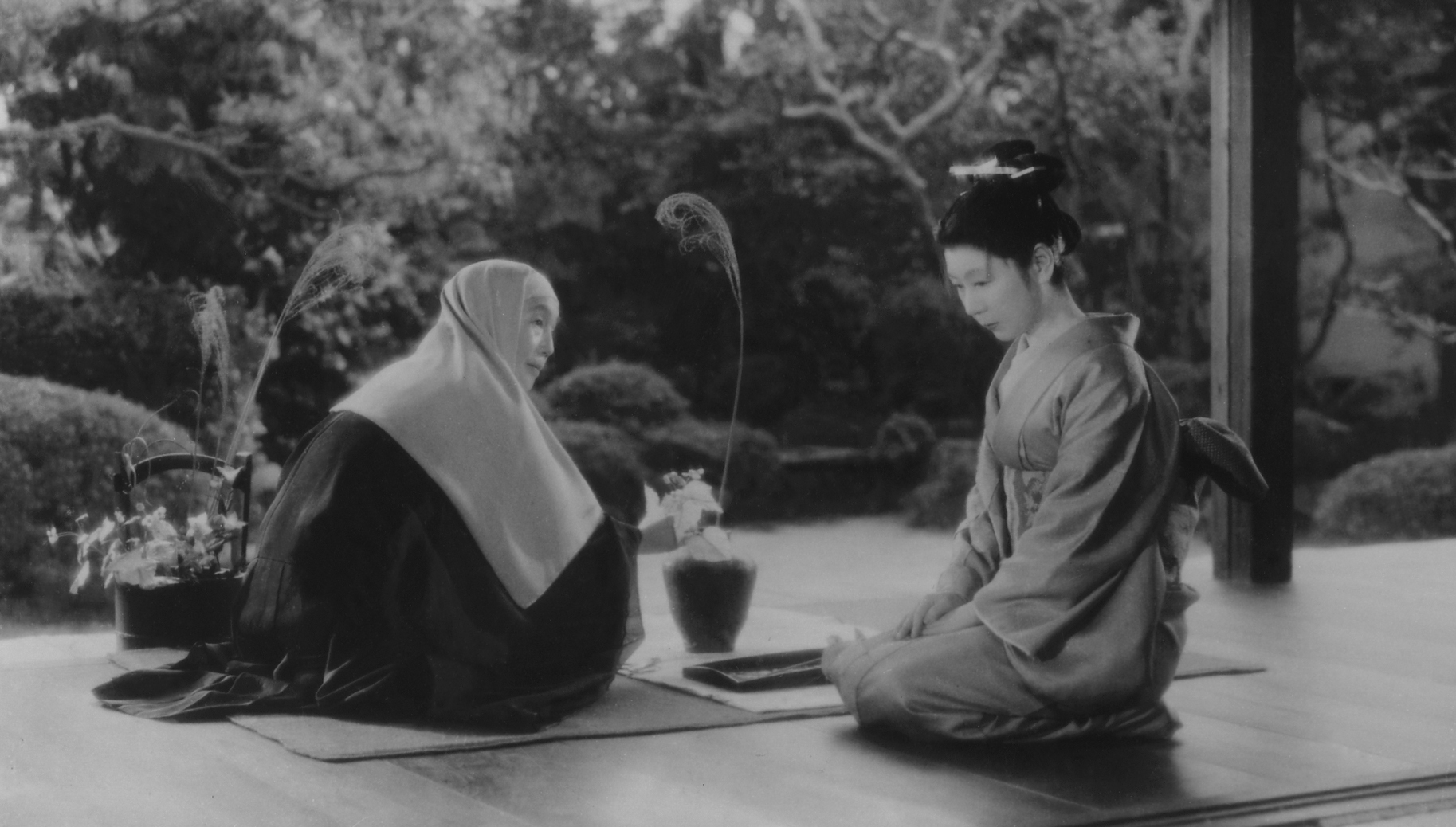The Criterion Collection: The Life Of Oharu Review

Kenji Mizoguchi was a ladies man. He had many lovers, one of which was a prostitute. The relationship ended when she almost killed him by stabbing him in the back with a razor. The Life of Oharu, a film made much later in his career, deals with the horrific treatment of women in a patriarchal society and the deep scars left on those who suffered at the hands of it. This is a fictional story that reflects on the life of a single woman who has been forced to turn to prostitution at the age of fifty to make ends meet. In comparison to Ozu’s meditative reflections and Kurosawa’s innovative stories, Mizoguchi’s The Life of Oharu is as troubling, unsettling and dark as they come.
Wandering the lonely streets, Oharu (Kinuyo Tanaka) at age fifty observes the women dragging men into secret spaces to make money. She meets fellow prostitutes and comments on how, at her age, trying to look twenty is an enormous challenge. Almost as a dream, she looks upon the stony faces in the temple and is reminded of her first lover, Katsunosuke (one of Akira Kurosawa’s favourite actors, Toshirō Mifune). We are shown her past and, as a woman of noble heritage, her love for Katsunosuke is forbidden as he is from a lower class. Their relationship is uncovered and Katsunosuke is beheaded while Oharu and her family are exiled. Realising her lover is dead, Oharu tries to take her own life but her mother (Tsukie Matsuura) saves her. Her father (Ichirō Sugai), in contrast, is struggling to make ends meet and sends Oharu to be a concubine for an affluent daimyo Lord (Toshiaki Konoe). Bearing him a child, the Lord’s wife is jealous and casts Oharu out, and away from her only child. Oharu attempts to support a family and even manages to find love again, but it is all cruelly snatched away from her. Left poor and homeless, she is taken in by similar women and we return to the beginning when she sells herself on the street.
Realising her lover is dead, Oharu tries to take her own life but her mother (Tsukie Matsuura) saves her. Her father (Ichirō Sugai), in contrast, is struggling to make ends meet and sends Oharu to be a concubine for an affluent daimyo Lord (Toshiaki Konoe). Bearing him a child, the Lord’s wife is jealous and casts Oharu out, and away from her only child. Oharu attempts to support a family and even manages to find love again, but it is all cruelly snatched away from her. Left poor and homeless, she is taken in by similar women and we return to the beginning when she sells herself on the street.
 The Life of Oharu is based upon a 1686 novel by Ihara Saikaku, The Life of an Amorous Woman. The Japanese title of the film even invokes the author’s name, Saikaku Ichidai Onna. This connection between novel and film is crucial and, though depicting a passionate woman, its period and focus upon “the floating world” (the pleasure-seeking aspects of life) is central to the story. As explained in the supplementary material on this Criterion edition of The Life of Oharu, Mizoguchi was “fond of sake and women [perhaps] too fond of women”. But this film reveals the darker truth to “pleasure seeking” and its consequence on the amorous women depicted.
The Life of Oharu is based upon a 1686 novel by Ihara Saikaku, The Life of an Amorous Woman. The Japanese title of the film even invokes the author’s name, Saikaku Ichidai Onna. This connection between novel and film is crucial and, though depicting a passionate woman, its period and focus upon “the floating world” (the pleasure-seeking aspects of life) is central to the story. As explained in the supplementary material on this Criterion edition of The Life of Oharu, Mizoguchi was “fond of sake and women [perhaps] too fond of women”. But this film reveals the darker truth to “pleasure seeking” and its consequence on the amorous women depicted.
The ambition of Mizoguchi is what remains so impressive about The Life of Oharu. A poster for the film portrays Oharu in all the various roles she is forced to play in her life: handmaid, courtesan, prostitute, beggar, nun, mother and daughter. She is woman and “she interacts with every social level” says Dudley Andrew (American film theorist and Professor of Film and Comparative Literature at Yale) on the commentary track. This all-encompassing role is a bold criticism of social expectations in the historical era depicted and in the modern world, making The Life of Oharu relevant and perceptive. At over two-hours long, there are 180 shots with 75% of them shot from a crane. Mizoguchi’s long, sprawling scenes play out patiently, humbly observing this sad, sordid world.
While Akira Kurosawa and Yasujirō Ozu are considered Japan’s finest filmmakers, there’s a strong argument for Mizoguchi. Ed Gonzalez for Slant claims The Life of Oharu is “The Holy Grail of Japanese Cinema”. With this sort of acclaim and the smart restoration in high-definition, with an uncompressed monaural soundtrack, this is surely worth seeking out and exploring yourself.
The Life Of Oharu – available to buy on Blu-ray from 24th April 2017
The Criterion Collection UK | @Criterion | #CriterionUK


